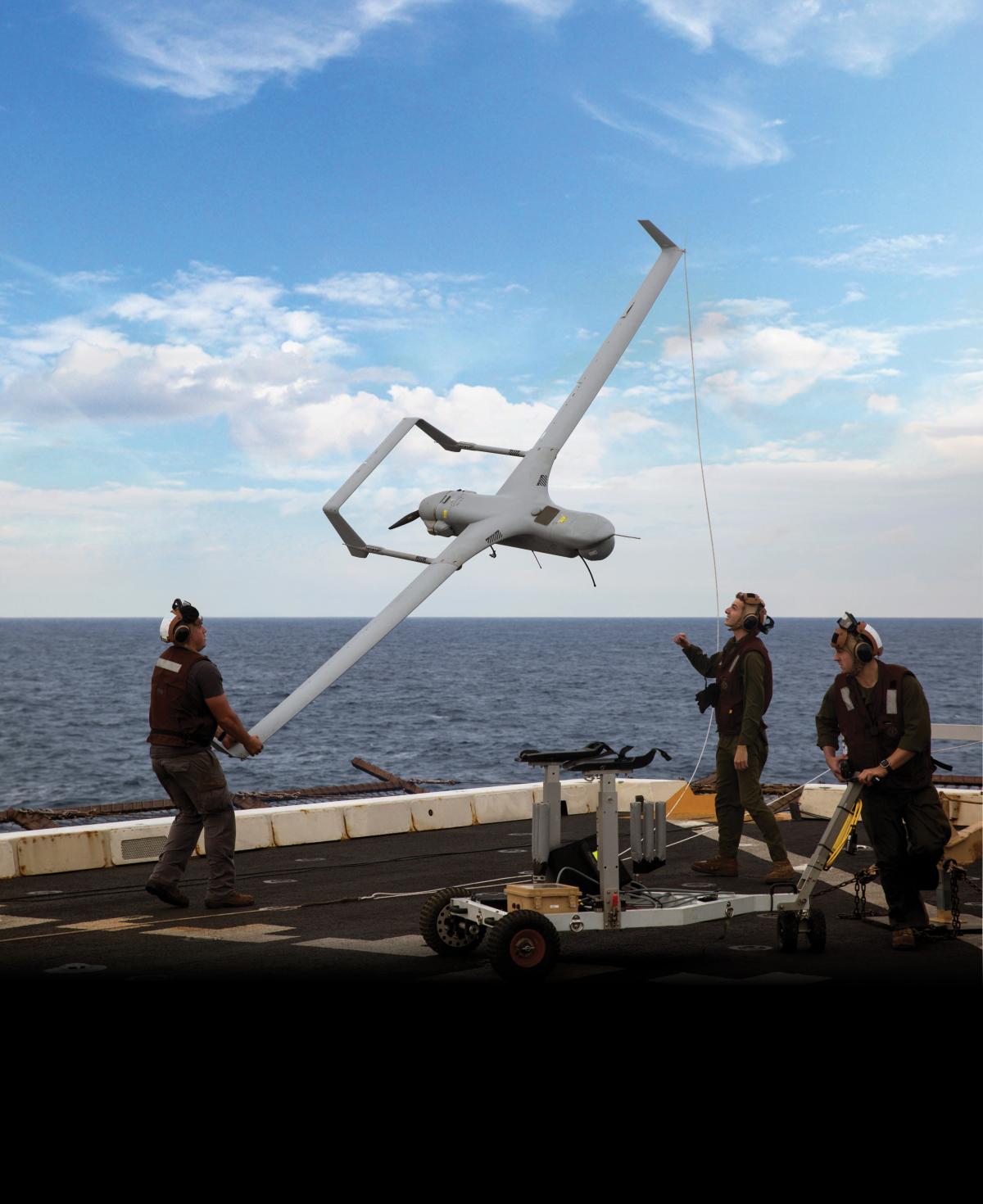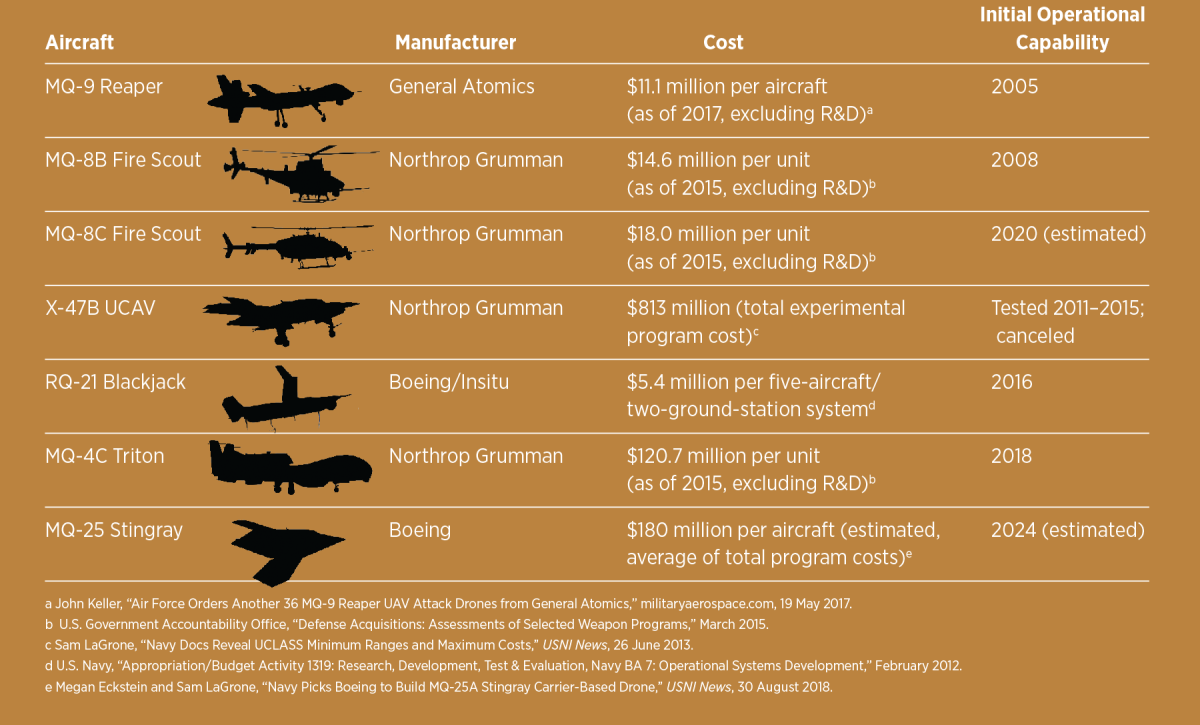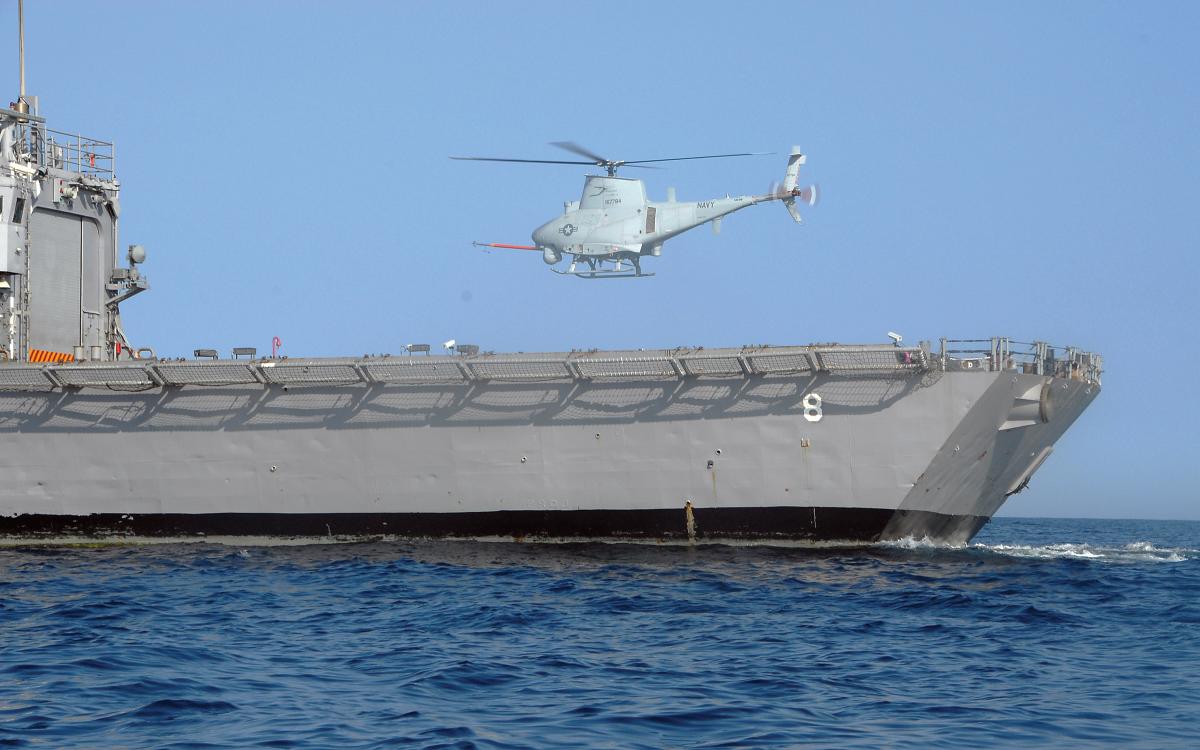Navy Commander William H. Johnson wrote in these pages in April 2003 that “UAVs Need Doctrine & Tactics.” He noted: “The most radical part of unmanned aerial vehicles is not the technology . . . but the application and integration of the platforms into traditional Navy operations.” Sixteen years later, the U.S. military has made strides in developing unmanned technology and applying it to the battlefield. Every service has used unmanned systems—in Afghanistan, Iraq, Yemen, the Horn of Africa, the Caribbean, and across Southeast Asia. But despite many technological and tactical strides, the maritime domain remains largely neglected. While unmanned aerial systems (UASs) such as the MQ-8B Fire Scout have deployed and operated on board ships, commanders and tacticians have yet to define adequately the role of these machines and their operators. The Navy must incorporate them into routine operations to realize their potential. This will require development of effective commander’s guidance and tactical doctrine for combined manned and unmanned employment, as well as an outline of acceptable levels of risk.
Compared with the rise of unmanned operations across the rest of the military over the past two decades, the Navy’s efforts have been almost insignificant. There have been only a handful of deployments on board amphibious ships, littoral combat ships (LCSs), or frigates operationally employing systems such as the RQ-21A Blackjack or MQ-8B Fire Scout. The Navy conducted aircraft carrier testing of the X-47B in 2013 and demonstrated its potential as a tanker (though no actual refueling occurred).
More recently, the Navy committed to deploying MQ-4C Tritons to Guam to provide strategic and operational intelligence, surveillance, and reconnaissance (ISR) in the western Pacific; however, full operational capability will not be available until 2021.1 While testing and deployments have been successful in their own right, little has been done to assimilate these systems formally into maritime operations. For example, an MQ-8B Fire Scout deployed to Southeast Asia on board the USS Coronado (LCS-4) in 2016, but the aircrews received little in the way of commander’s guidance to determine when or how to use the system. Schoolhouses such as the Naval Aviation Warfare Development Center (NAWDC) or the Surface and Mine Warfare Development Center (SMWDC) remain largely silent on tactical implementation of unmanned systems.
This lack of policy and doctrine has been a sticking point for those deploying with these systems. Use of unmanned systems occurs on a case-by-case basis, establishing little precedent to guide future employment. This leaves ships’ commanding officers or even aviation detachment officers-in-charge (OIC) as the ultimate arbiters of UAS operations, without any clear or even suggested guidance from the immediate superior in command.
Some Navy UAS tactics, techniques, and procedures have been borrowed from sister services—but the overwater environment presents unique challenges that have not been addressed. This is especially important when operating in contentious, high-traffic areas such as the South China Sea or the Strait of Hormuz. The lack of clear policy guidance means that UASs and operators are deploying to maritime environments without clarity on how, where, or when to use them.
Tactical employment Limitations
The current inventory of operational naval UASs can be described as tactical assets with narrow, limited capability, thanks to small size and payload capacity. The MQ-8B Fire Scout payload, for instance, consists of a forward-looking infrared camera and a radar kit. Future upgrades will include real-time video transmission to ground units. Eventually, the MQ-8B will be able to carry a mine-detection payload—but weight and space limitations will prevent the UAS from carrying multiple payloads at the same time. When the MQ-8C joins the fleet, it will offer increased fuel and payload.
The MQ-8B, however, exhibits the tactical limitations of the current field of UASs and shows that ship-based UASs are not multimission aircraft. While this might seem limiting to commanders, for aircrews the resultant narrow focus allows them to hone core skill sets—primarily ISR. Core ISR skills do not change, but the types of supported units and missions do.
The tactical efficacy of any platform is driven largely by where it is based and who can operate it. With the exception of the MQ-4C Triton, all naval UASs are ship-based and can be operated only in line-of-sight (unlike Air Force assets such as the MQ-9 Reaper, which has an operational range of more than 1,100 miles). In addition, the vulnerability of a ship can create significant limitations to how UASs are employed. A ship with limited defensive capability threatened by area-denial tactics and weapons will be unable to do very much with any ship-based aircraft, manned or unmanned. Surface action groups consisting of diverse ships with robust defensive measures can mitigate these restrictions. However, unaccompanied, less self-protected ships such as the LCS and their manned/unmanned aviation complements will be limited in their utility beyond Phase 0 or 1 operations. This must be codified in realistic doctrine and tactical publications and promulgated through commander’s intent. With few exceptions, such information currently does not exist—or is ephemeral at best.
Accepting Risk
The “acceptable level of risk” concept determines what types of threats a mission task force can be exposed to and still execute the mission. In combat, the acceptable level of risk is determined by myriad variables, but expected human and material losses play prominent roles. Commanders must change the way they think about risk as they integrate unmanned systems into maritime conflict. Some draft policies suggest that unmanned systems should not be considered expendable, despite the risk being to a machine, not people. Others disagree— such as the Third Fleet TacMemo 2-01.1-13, “Shipboard Unmanned Aircraft Systems Employment Tactics (April 2013),” which states, “The principal advantage of a UAS is that it is unmanned; its loss presents no risk to its crew.” While true, this statement implies, perhaps unintentionally, that UASs are expendable and that the loss of combat capability can be replaced easily.
Several authors—including P. W. Singer, Bradley J. Strawser, John Kaag, Sarah Kreps, and Gregoire Chamayou—have addressed the risks developing as a result of unmanned systems substituting for or complementing manned ones. Merely adapting guidance based on employment of manned systems does not take into account the idiosyncrasies of unmanned ones. For instance, if both manned and unmanned systems are employed in a conflict, what will be the deciding factor when determining acceptable risk—preserving a system or saving a person? The intuitive answer is the latter. But if the Navy has determined that these systems should not be considered expendable, that implies limitations on their employment. It is generally held that the greater a system’s utility, the less appetite there is for risking its loss.
General John Allen and Amir Husain wrote in the August 2018 Proceedings that the loss of unmanned systems will increase risk acceptance, potentially making conflict more likely. The reader might follow up to ask: Is conflict more or less likely if losses—manned or unmanned—cannot be replaced? Can the Navy replenish its losses in a high-end fight?
Many variables come into play when aircraft of any type are employed. What countermeasures (flares, chaff, self-defense weapons, etc.) do they possess? How maneuverable are they? Has suppression of enemy air defense opened up the aerial battlespace? Unmanned systems carry additional risk factors: What situational awareness does the system provide the operator to react to threats? What reaction-time delays and lags result from human input requirements? How susceptible are UASs to datalink disruption? Current deployable systems lack meaningful self-defense or countermeasure capability. This tends to limit UASs to phases 0, 1, and potentially 5 of the “Continuum of Military Operations,” as long as they are not considered expendable.
Inevitably, this leads to selective employment of the systems. No low-level commander will hazard them unless risks are negligible, or a task force that allows for sufficient self-defense covers them. For this reason, senior leaders with operational control over unmanned systems must assess overall risks and issue guidance so that subordinates and tacticians can operate UASs effectively.
A Way Forward
Tactical development of maritime UASs must start with acknowledgment of the constraints imposed by current onboard systems, concurrent manned-aircraft operations, and the base platform. Given the present capabilities and vulnerabilities of ship-based or maritime UASs, they can provide little utility in a kinetic conflict unless they are considered expendable.
Despite these concerns, there is room for growth. Future employment of UASs likely will take them to larger surface forces such as expeditionary and carrier strike groups (ESGs and CSGs) as well as surface action groups (SAGs). Adjusting LCS deployments to a two-ship model could increase the tactical efficacy of the ships and the manned and unmanned (MQ-8B) aircraft, thanks to the flexibility that SAGs bring to a fight.
Understanding the constraints also involves thinking about adversary capabilities, specifically those of near-peers China and Russia. The Wall Street Journal reported on 9 April 2018 that China has based communication and radar-jamming equipment on disputed islands in the South China Sea.2 The next day, various news outlets reported that Russia successfully jammed U.S. Air Force unmanned aircraft in Syria.3 Jamming has potentially catastrophic effects on UAS control, given that the MQ-8B and other current shipborne UASs depend on active radio links. Further, no data available to the author exists on how UASs could operate in an emissions-controlled (EmCon) environment, though the MQ-8B’s architecture suggests EmCon operation could become a future capability. The Third Fleet TacMemo 3-03.1-14, “Ship-Based Unmanned Aircraft Systems (UAS) Overland/Littoral Employment Tactics,” suggests more research is needed to permit UAS operations in an EmCon environment.
The Navy also must focus on the fundamentals of incorporating UAS into manned operations. Big strides will be necessary to integrate unmanned systems into the greater “system of systems” that high technology and the digital age impose. Tactical developments must be accompanied by integration into the current network-centric framework, but unfortunately, deployable UASs are not yet capable of that. Too little has been accomplished beyond proving basic tactical systems or showing that specific UASs can do what the Naval Air Training and Operating Procedures publication says they should be able to do. These are important, but because these systems are deploying already, executing the basics should be a matter of course.
Instead, UASs should be incorporated into high-fidelity, full mission profiles and exercises to show how these systems operate in complex and dynamic environments. In addition, threat-system simulators should be incorporated into these training events so that a base of data may be collected and analyzed. With this data, policy for and knowledge of the risks associated with UAS operations in different threat environments can be developed. This will allow for higher-level training and decision-making for operators of manned and unmanned systems alike. Unmanned integration should be the norm, not an exception.
Commander Johnson retired from the Navy as a captain. Having identified the problem 15 years ago, he probably would be surprised that maritime UAS tactics remain in their infancy. But they cannot and must not stay that way. Using fleet input, SMWDC, NAWDC, and Navy Warfare Development Command must be engaged. Testing should drive tactical innovation and improve manned-unmanned teaming. This should establish baseline knowledge of the utility of unmanned systems and thereby provide commanders the necessary guidance for their employment. Progress is not inevitable—without clear operational commander’s guidance, tactical doctrine, and routine integration into high-end training, these systems will not reach their potential.
1. Julian Turner, “America’s MQ-4C Triton Drones and the Battle for the South China Sea,” Army Technology, 11 July 2018.
2. Michael Gordon and Jeremy Page, “China Installed Military Jamming Equipment on Spratly Islands, U.S. Says,” Wall Street Journal, 9 April 2018.
3. Courtney Kube, “Russia Has Figured Out How to Jam U.S. Drones in Syria, Officials Say,” nbcnews.com, 10 April 2018.






